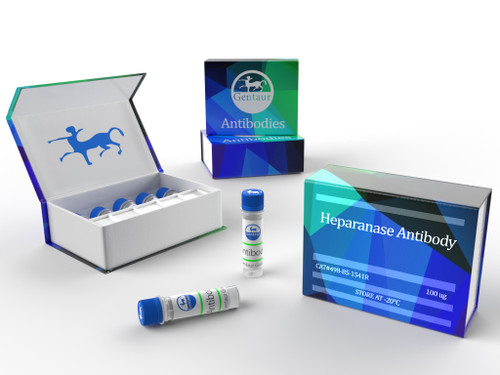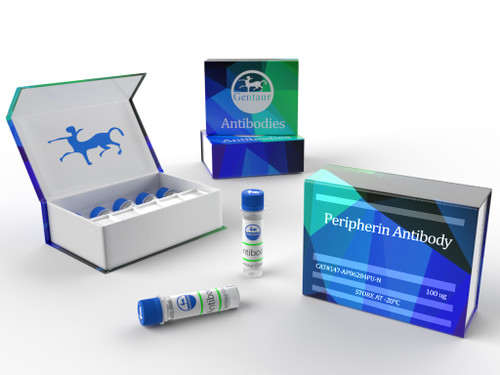Heparanase Antibody
Glycosaminoglycans (GAGs) are large linear-unbranched polysaccharide chains with repeating disaccharide units of amino sugar (either GlcNAc or GalNAc) and an uronic acid (either glucuronic acid and/or iduronic acid). Five glycosaminoglycan chains were identified, viz., Hyaluronan, Chondroitin, Dermatan, Heparin/heparan and Keratan with possible sulfation at 2S, 4S or 6S locations.
In virtually all animal tissues, the cell membranes and the extracellular matrices (ECM) are decorated with glycosaminoglycans (GAGs) such as heparin and heparan sulfate (HS), which are linear sulfated polysaccharides. These GAGs play an intricate role in the ECM, as polyelectrolytes by specifically interacting with growth factors and other transient components of the ECM.
Heparin and HS have been associated with cell-biological processes, cell adhesion and regulation of enzymatic catalysis while HS chains have been shown to interact with a variety of growth factors (fibroblast growth factors and vascular endothelial growth factor), chemokines, ECM proteins, enzymes, and antithrombin. Additionally, heparin and HS molecules were found to mediate the viral adhesion and the infection process and considered as important factors in the host-pathogen interactions.
Heparin, low molecular weight heparins (LMWH) and ultra-low molecular weight heparins (ULMWH) are widely used as anticoagulant drugs and they have been shown to regulate cellular process by binding, stabilizing and activating various growth factors. Heparinases are used in the production of LMWH and ULMWH.






